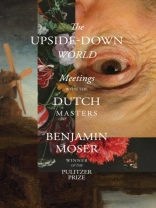A Washington Post Notable Book of 2023
Plunged into a strange land at twenty-five, Benjamin Moser began an obsessive, decades-long study of the Dutch Masters to set his world right again.
Beyond the sainted Rembrandt—who harbored a startling darkness—and the mysterious Vermeer, whose true subject, it turned out, was lurking in plain sight, Moser got to know a whole galaxy of geniuses: the doomed virtuoso Carel Fabritius, the anguished wunderkind Jan Lievens, the deaf prodigy Hendrik Avercamp. And through their artwork, he got to know their country, too: from the translucent churches of Pieter Saenredam to Paulus Potter’s muddy barnyards, and from Pieter de Hooch’s cozy hearths to Jacob van Ruisdael’s tragic trees.
Year after year, as he tried to make a life for himself in the Netherlands, Moser found friends among these centuries-dead artists. And he found that they, too, were struggling with the same questions that he was. Why do we make art? What even is art, anyway—and what is an artist? What does it mean to succeed as an artist, and what does it mean to fail? Is art a consolation—or a mortal danger?
The Upside-Down World is an invitation to ask these questions, and to turn them on their heads: to look, and then to look again. This is Holland and its great artists as we’ve never seen them before. And it’s a sumptuously illustrated, highly personal coming-of-age-story, twenty years in the making: a revealing self-portrait by one of the most acclaimed writers of his generation.
Om författaren
Benjamin Moser was born in Houston, Texas, and lives in Utrecht. He is the author of Why This World: A Biography of Clarice Lispector, and for Sontag: Her Life and Work, he won the Pulitzer Prize.












